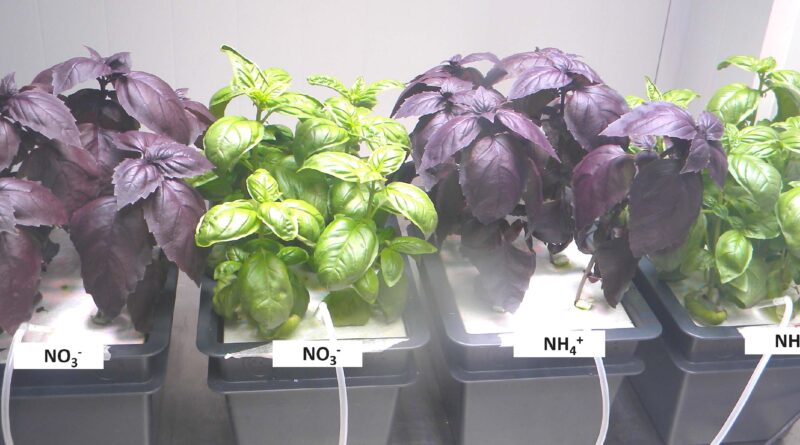NITROGEN NUTRITION AND BASIL QUALITY: THERE IS NEWS
Basil comprises green and purple cultivars, worldwide cultivated and appreciated for high contents of rosmarinic acid and anthocyanins, respectively. Although nitrogen fertilization is needed for high yields, in basil it could have detrimental effects on the accumulation of phenolic compounds with nutraceutical properties. In this study, plants of green or purple basil were grown in hydroponics and subjected to different nutritional treatments, consisting in N starvation, and nitrate or ammonium nutrition. Parameters related to plant growth and nutritional status were evaluated and put in relation with quality traits of basil leaves, among which chlorophyll content, antioxidant capacity, and the concentrations of individual (poly)phenolic acids and flavonoids. This study reveals that the three nutritional conditions differently affect the phenolic composition in the two cultivars. Compared to plants treated with nitrate, green basil exposed to ammonium showed a higher content of (poly)phenolic acids, while purple basil was characterized by higher contents of anthocyanins. Overall, the study provides new knowledge about the relationship between N nutrition and phenolic metabolism, suggesting that the management of ammonium supply in hydroponics could contribute to enhance the quality of basil
Figure: The picture shows plants of green or purple basil grown in hydroponics.
REFERENCE
Prinsi, B.; Negrini, N.; Morgutti, S.; Espen, L. Nitrogen Starvation and Nitrate or Ammonium Availability Differently Affect Phenolic Composition in Green and Purple Basil. Agronomy 2020, 10(4), 498 [doi: 10.3390/agronomy10040498].
NOTE: This research was funded by Piano di Sostegno alla Ricerca 2015-2017 – azione A, DiSAA, Università degli Studi di Milano.

